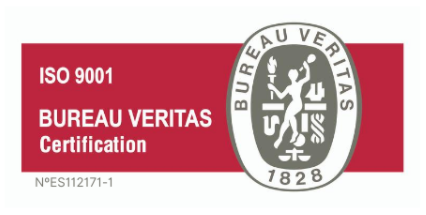Para implantar Lean Manufacturing en una industria es necesario fijar objetivos a largo plazo y sobre todo seguir los pasos marcados por esta filosofía de gestión de la industria. Pero, ¿qué es el sistema lean para fábricas?, ¿se puede implantar en cualquier fábrica?, ¿cuánto tiempo lleva?
La producción eficiente se basa en una metodología o modelo para la gestión del trabajo en equipo y para la comunicación. Es decir, su enfoque es mejorar esta área para aumentar la productividad, la calidad y reducir los desperdicios y el coste innecesario. Para implantar un modelo de Lean Manufacturing en una fábrica es necesario seguir una serie de pasos.
Finalmente, la industria obtendrá grandes beneficios de la implementación y mejorará su competitividad. En Mesbook contamos con un software LEAN para guiar a las fábricas hacia la eficiencia productiva y como expertos en la materia queremos que conozcas sus posibilidades.
Antes de profundizar, te gustará saber que el Lean Manufacturing es de origen japonés y nació de la mano de Sakichi Toyoda, fundador del Grupo Toyota con la idea de transformar la industria del automóvil, algo que consiguió desde el principio con mucho éxito. Ahora, cientos y miles de empresas en el mundo replican esta estrategia para reducir los desperdicios y mejorar la relación ingreso – gasto.
¿Cómo implantar Lean Manufacturing en una fábrica convencional?
Para implementar lean manufacturing correctamente el primer paso es marcarse unos objetivos a largo plazo que estén insertos en la definición de lean manufacturing, o “producción ajustada”. Estos objetivos no varían en función de cada empresa, pues ya son lo suficientemente genéricos, más bien cada empresa los adapta de un modo diferente. Para la fijación de estos objetivos, es recomendable realizar un autodiagnóstico LEAN que MESbook ha desarrollado tras realizar auditorías en más de 150 empresas.
Estos son los objetivos que todas las industrias deben marcarse si quieren implementar lean manufacturing:
- Mejora de la calidad: No debe extrañarte que este sea el primer objetivo, pues de hecho la mayoría de acciones destinadas a implantar lean manufacturing están relacionadas con la reducción de defectos y sus costes y gastos, de tiempo, de material, maquinaria, etcétera.
- Implicación de las personas: Dado que el principal activo en las empresas son las personas, es fundamental que todos estén alineados y comprometidos con los objetivos de la empresa.
- Alinear la estrategia: En muchos casos, nos encontramos con planes de acción que no dan soporte a la definición estratégica de la empresa, por lo que será imprescindible que ambos escenarios, estrategia y táctica estén conectados permanentemente.
- Reducción de costes:. El lean manufacturing se basa en asumir que el precio lo pone el cliente en base a su criterio, contexto, deseo… por tanto, como la industria tiene menos margen para elegir el precio debe centrarse en reducir costes para así, mantener e incrementar sus beneficios.
- Producción más ágil: si la producción es más flexible, se reducen costes, el margen de beneficios es mayor en relación: gastos/ingresos. Para conseguir flexibilidad es necesario implantar mecanismos que permitan adaptarse de manera más ágil a los cambios del mercado, en definitiva, de los clientes.
- Más productividad: este punto es el resultado de los anteriores. Si aumenta la calidad del producto, la implicación de las personas, la flexibilidad y se reducen los costes, aumenta la productividad. No obstante, en algunas industrias sin stock también puede ser importante aumentar la productividad per se.
- Mejora continua de los procesos: este es el punto más importante. Debes entender el lean manufacturing como una filosofía de mejora continua donde hay procesos de revisión, análisis, cambio…donde el control de incidencias profesional es clave.
Ahora ya conoces los objetivos fundamentales del lean manufacturing. Pero, ¿cómo aplicarlo en la industria?
Pasos para aplicar el lean manufacturing
A continuación, vamos a ver algunos de los principales pasos para insertar la filosofía o metodología del lean manufacturing en la empresa.
La mayoría de ellos están relacionados con eliminar procesos, rutinas, aprovechar mejor las máquinas, tiempos, estrategias desfasadas, costes innecesarios y más.
Es decir, el lean manufacturing se centra en eliminar lo innecesario (desperdicio) más que en crear nuevas opciones de fabricación. Es una metodología que supone una limpieza de la fábrica y que permite conocer mejor los errores y opciones de mejora. Vamos a ver los principales desperdicios:
- Sobreproducción: Intentando fabricar lo justo y necesario para evitar incrementar el resto de desperdicios.
- Exceso de stock: Esta es la principal medida paliativa que se utiliza para resolver otros problemas en lugar de atacar la causa raíz de los mismos. El inventario es el principal “mal” de las fábricas.
- Transportes innecesarios: Conviene eliminar cuanto antes todos aquellos movimientos de materiales dentro de la fábrica, que tienen un coste y un tiempo asociado, pero que no aportan valor..
- Movimientos: Reducir o eliminar cuando sea posible todos aquellos movimientos de personas o dispositivos que desfocalicen las tareas hacia la aportación de Valor, es decir, aquello por lo que el cliente está dispuesto a pagar.
- Defectos: y por supuesto, hay que eliminar todos los fallos de calidad que se encuentren. Para ello hay que analizar los procesos, hacer anotaciones y proponer mejoras. Luego, seguir estudiando hasta que la calidad sea impecable. Siempre con la premisa de reducir los costes de Calidad y lo de No Calidad.
- Sobre proceso: Adecuando los procesos a las necesidades del producto para alinear los costes de explotación.
- Esperas: Tanto del producto, las personas o las máquinas. Este es el más fácil de reconocer pero no siempre se aborda con la rigurosidad que requiere.
Una vez se han eliminado todos estos desperdicios, hay que poner en valor algunos enfoques:
- Idea de valor: ¿qué añade valor al producto, ¿qué le resta valor al producto? de ese modo se identifican los procesos innecesarios y se intensifican los que mejoran su calidad percibida por el cliente.
- Producción sin interrupciones: no solo consiste en reducir los tiempos, sino en crear un flujo de trabajo ágil y contínuo. Para ello conviene comprender cada proceso y su conexión con los otros. Es ventajoso en este punto contar con un software de gestión o productividad de la fábrica.
- El inicio o disparador: ¿qué determina el punto de partida? el punto en el que inicia todo y se toman las decisiones debe relacionarse íntimamente con la demanda.
Y por supuesto, siempre debe estar presente una idea que se ha mencionado antes; la de mejora continua. Para implantar lean manufacturing en una industria es necesario tener presente que este no se implanta una vez, sino que está en continua inserción y revisión. El lean manufacturing no descansa, es un modelo de prueba y error que busca optimizar de forma constante la industria.
Sectores en los que implementar la manufactura ligera
Se puede implementar en todos los sectores, aunque en algunos su efectividad será más notoria que en otros. También, en algunos podría tardar algunos meses o años en mostrar todo su potencial. Vamos a ver algunos de los sectores en los que implementar el lean manufacturing:
- Fábricas e industrias textiles
- Industria alimentaria
- Fábricas químicas
- Fábricas cementeras
- Fábricas de extracción de gas natural
- Para la fabricación de muebles
- Industria de los metales o siderometalúrgicas
- Fábricas de papel
- Fábricas automovilísticas
- Fábricas de ladrillos
- Fábricas de software
- La industria farmacéutica
Estas son solo algunas de las fábricas e industrias en las que se puede aplicar el lean manufacturing. Por supuesto, para hacerlo será más sencillo utilizar algún tipo de ayuda digitalizada capaz de controlar, medir, analizar…. las acciones, resultados y opciones de cambio o variables disponibles. En MESbook podemos ayudarte con nuestros softwares para fábricas de última generación. Contacta con nosotros.

Customer Success Management Director
Arturo Torres
Ingeniero industrial con más de 27 años de experiencia en distintos sectores como director de operaciones, Supply Chain, Procesos y Calidad. Docente en instituciones como la Cámara de Comercio y el Consejo General de la Ingeniería Técnica Industrial de España.





